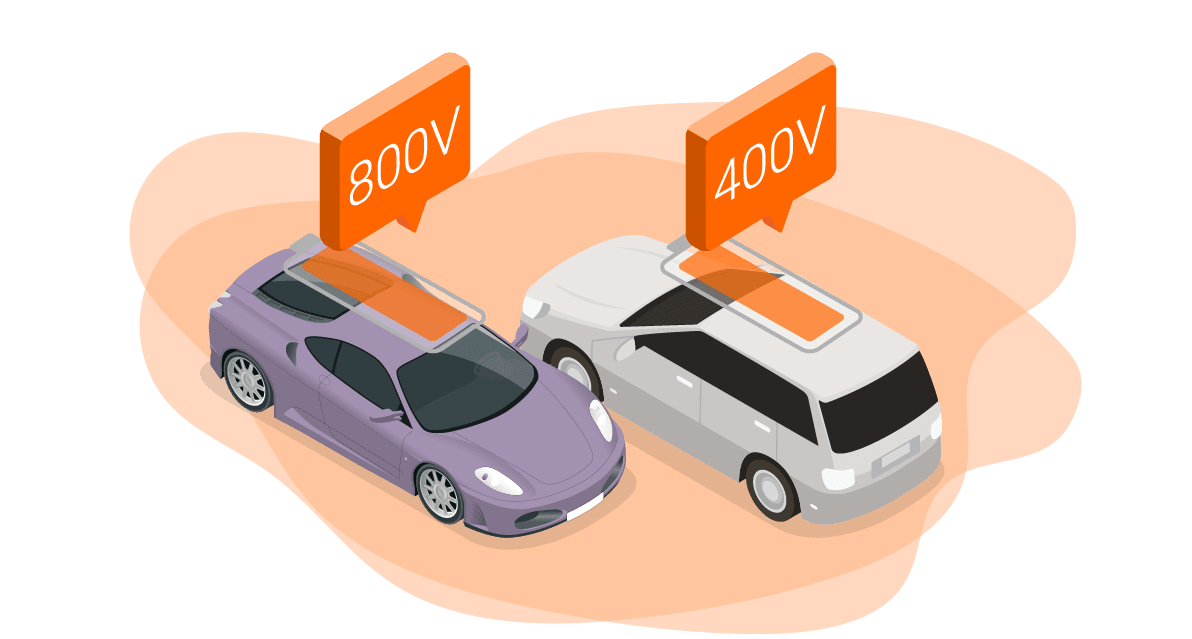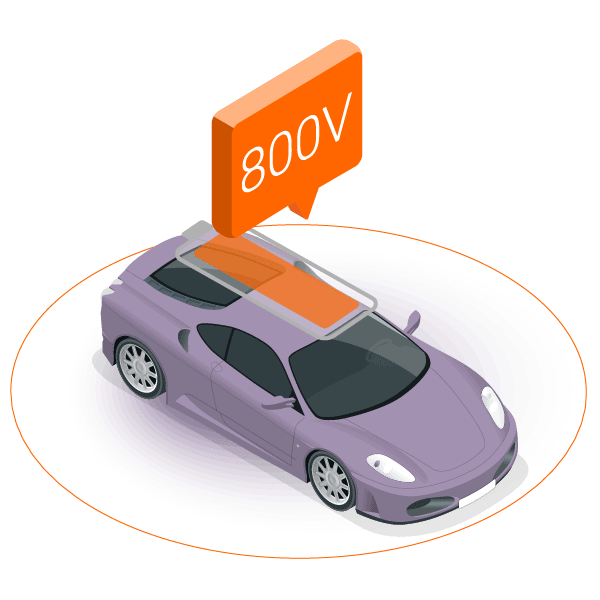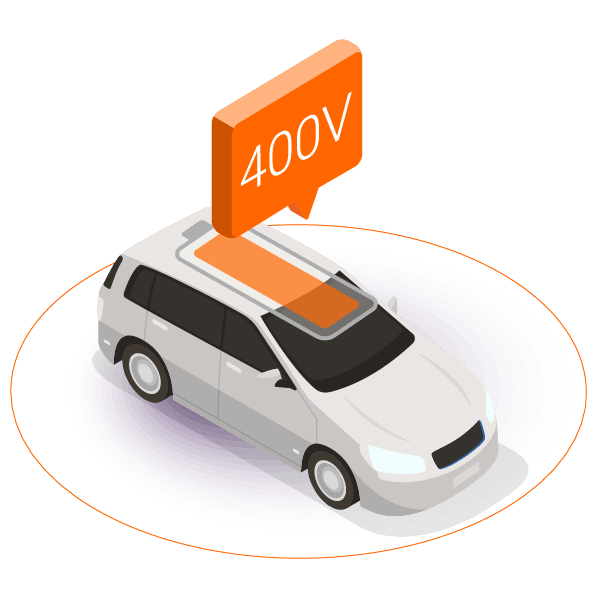Contact Info
2600 Technology Drive, Suite 100
Plano, Texas, 75074
United States
2600 Technology Drive, Suite 100
Plano, Texas, 75074
United States

Last Updated: December 23rd, 2022 | E-Mobility
800-volt charging speed. What does it even mean? Does it really matter? Aren’t the critical parts of a charge its kilowattage and whether the power is AC or DC? Yes, those are important aspects of any EV charger. However, some lesser-known details are about to become a lot more significant.

Anyone paying attention to the last decade knows technology advances at a lightning-fast pace. Innovation is happening in cell phones, medical equipment, electric vehicles, and their chargers. When you think about charging up your vehicle, you probably consider the speed of the charger. If you know enough about your car, you will know its kilowatt (kW) input capacity – the maximum amount of wattage it can absorb from the charger. Some vehicles have a high transfer rate, allowing them to charge at speeds over 150kW. Conversely, others never top 50kW, even if they’re hooked up to a faster charger. That could mean the difference between charging a vehicle from 10% to 80% in 20 minutes or one hour!
So, what does voltage got to do with it, and does it really matter? First, higher voltage drive systems are able to provide the same amount of power with less current. The result is lighter cables and a lower overall weight to the vehicle, automatically increasing the EV’s range. Second, and more significant for drivers and operators of EV chargers, is some modern charging stations make use of the new drive systems. If an EV has 800V charging architecture and the charging station can match (or beat) that, charging time drops significantly – charging the car up to 2x faster.

Unfortunately, not every charging station can keep up. Older or less-advanced stations don’t have the internal architecture to offer the kind of lightning-fast charge people will quickly come to expect. Drivers will soon be looking for DC fast chargers, specifically ones that can give them the charging speed they want. The Noodoe EV Exceed DC series is built with a 950-volt internal structure that meets those needs. They’re futureproof in every way you can imagine!
The technologies for EVs and developing these drive systems are still evolving. However, it’s not something Noodoe alone is dreaming about. Many companies are promising battery structures to allow 800-volt charging in vehicles, and a few have already started to deliver!
BYD’s new Blade battery is expected to include an 800V structure. According to the company, this will allow it to charge 90 miles of range in only 5 minutes. BYD first showed off the new battery earlier this year in Shanghai. It’s intended to be an integrated part of their 3.0 e-platform.
New Audi eTron GTs will include both an 800V structure and the ability to charge up to 270kW. That is incredibly fast! It puts it in line with the ancestor of 800V charging: the Porsche Taycan. The eTron GT promises to be as impressive in its range as it is in its performance.
South Korean Hyundai Motor Group announced in July that the Kia EV6 also includes that 800V charging speed. Per the press release, the Kia EV6 will be able to charge 10%-80% in only 18 minutes. This is, of course, assuming the charger can keep up with these new standards. In addition to the EV6, Hyundai will also include the 800v system on the new Ioniq 5. They’re both based on the E-GMP platform for electric vehicles.
The first is still the most powerful vehicle that can use this kind of charging is cutting-edge: the Porsche Taycan. Released in 2019 with an 800V internal architecture, for the Taycan to charge at its fastest rate it needs a charger that can meet both the 800V requirement and the ability to transfer at least 270kW of power. Not a lot of chargers out there can do that yet (the Noodoe DC Exceed 360P can), but it’s quickly turning into a race to offer the best, fastest charge.
Just as they have with DC fast chargers, EV drivers will prioritize charging at more powerful speeds when they’re trying to fill up and get back on the road. That means demand for chargers that can pass the test.
This isn’t yet the industry standard, but it will be soon. Most EVs produced currently have 400-volt internal architecture, which will not be the case forever. We know that EV technology is advancing quickly. When installing an EV charger, it’s essential to consider this knowledge. For chargers to be truly futureproof, they must be able to meet the market demands that are coming, not just the ones already in place.
| Cookie | Duration | Description |
|---|---|---|
| cookielawinfo-checkbox-analytics | 11 months | This cookie is set by GDPR Cookie Consent plugin. The cookie is used to store the user consent for the cookies in the category "Analytics". |
| cookielawinfo-checkbox-functional | 11 months | The cookie is set by GDPR cookie consent to record the user consent for the cookies in the category "Functional". |
| cookielawinfo-checkbox-necessary | 11 months | This cookie is set by GDPR Cookie Consent plugin. The cookies is used to store the user consent for the cookies in the category "Necessary". |
| cookielawinfo-checkbox-others | 11 months | This cookie is set by GDPR Cookie Consent plugin. The cookie is used to store the user consent for the cookies in the category "Other. |
| cookielawinfo-checkbox-performance | 11 months | This cookie is set by GDPR Cookie Consent plugin. The cookie is used to store the user consent for the cookies in the category "Performance". |
| viewed_cookie_policy | 11 months | The cookie is set by the GDPR Cookie Consent plugin and is used to store whether or not user has consented to the use of cookies. It does not store any personal data. |
